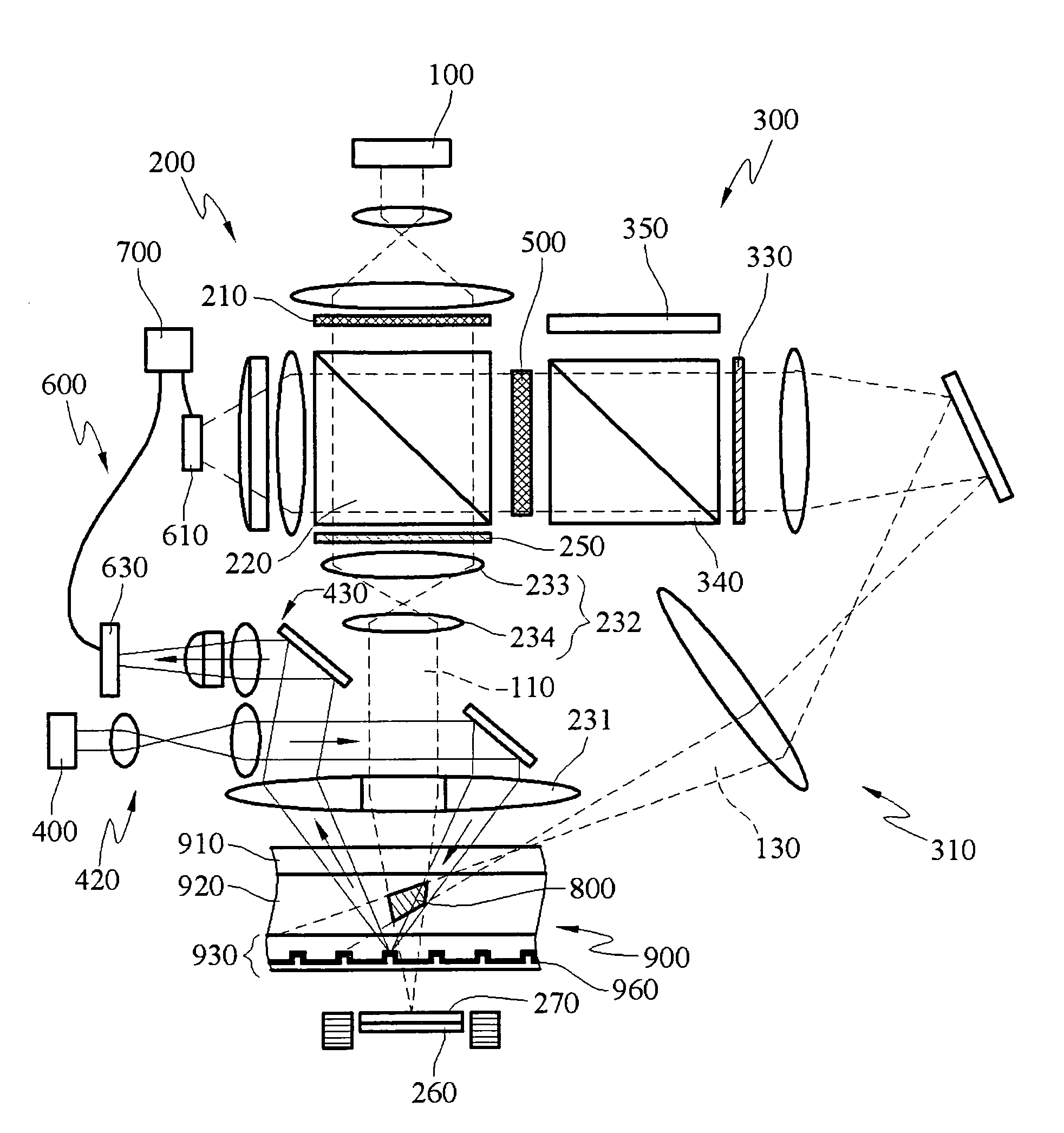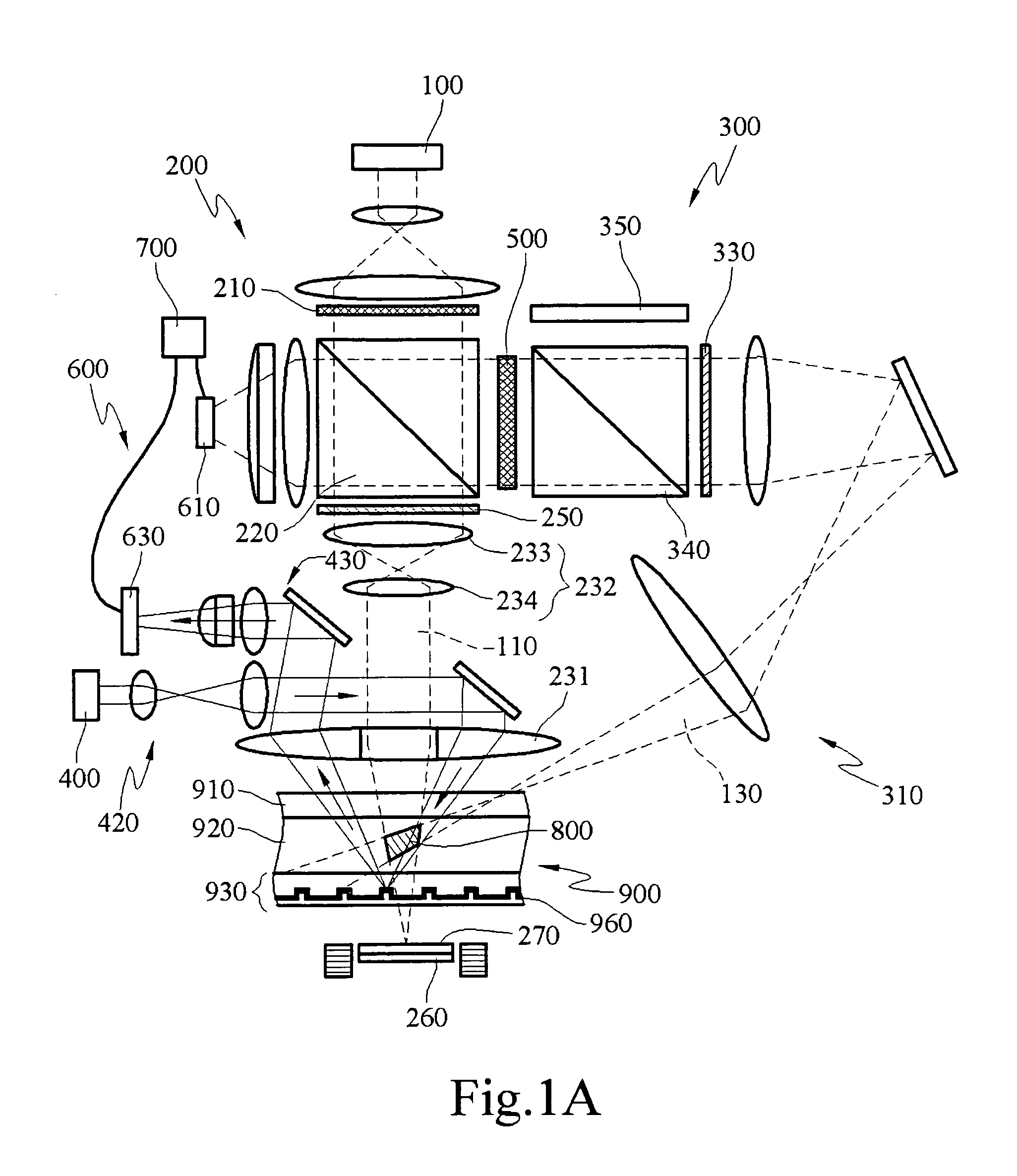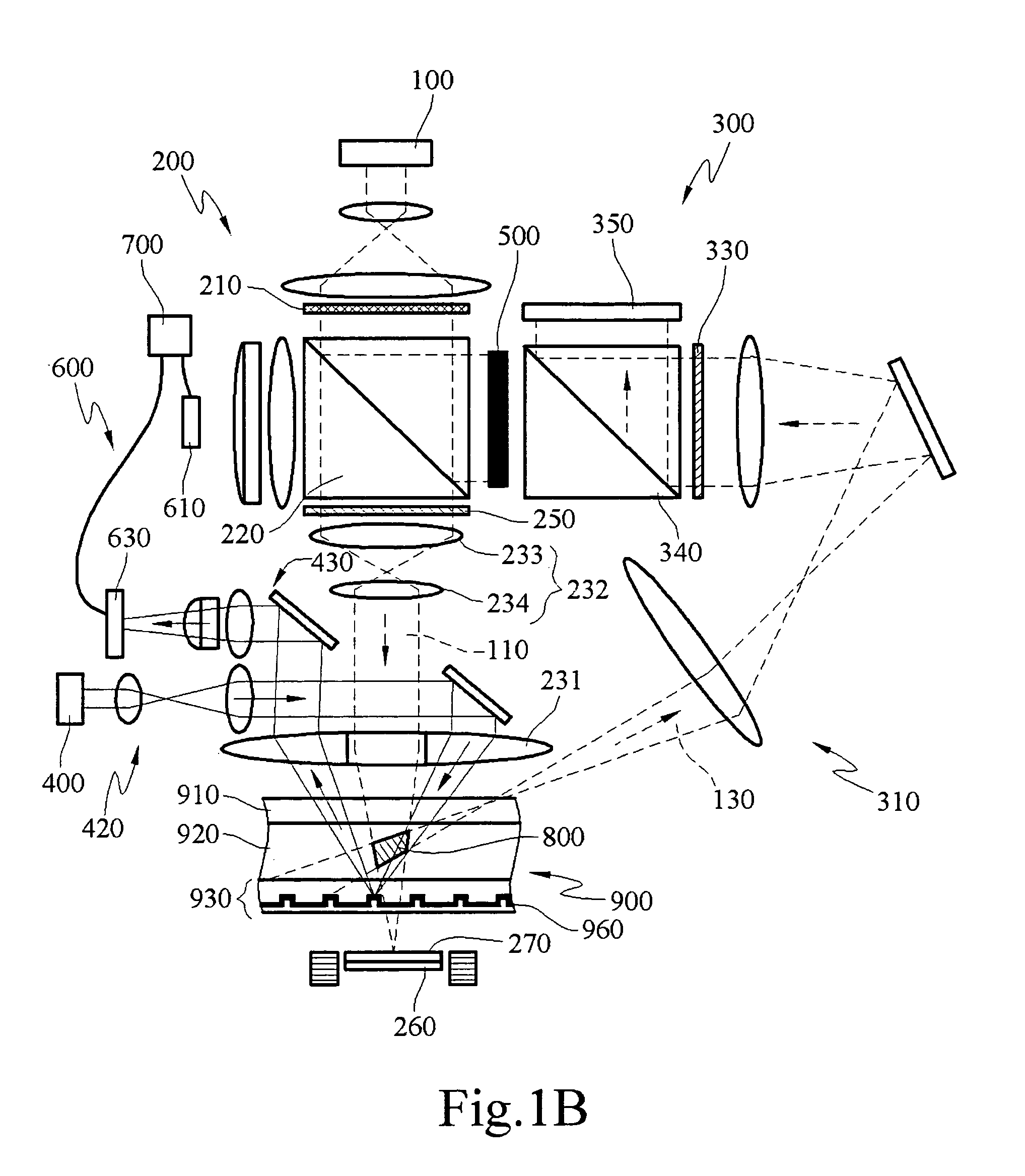System and method for recording and reproducing holographic interferogram with optical servo
a technology of optical servo and holographic storage, which is applied in the field of system and method for recording and reproducing holographic storage, can solve the problems of difficult application to commercial optical storage products, and inability to achieve holographic storag
- Summary
- Abstract
- Description
- Claims
- Application Information
AI Technical Summary
Benefits of technology
Problems solved by technology
Method used
Image
Examples
first embodiment
[0050]A light source 100 emits coherence light. The coherence light is split into a reference beam 110 and a signal beam 130 after passing through a first light guiding portion 200. The reference beam 110 is guided by the first light guiding portion 200 to be projected to the holographic storage media 900 in a first incidence direction. In the first embodiment, the first incidence direction is a direction perpendicular extending into the holographic storage media 900. The signal beam 130, split by the first light guiding portion 200, is projected to a spatial light modulator (SLM) 500. The signal beam 130 is modulated by the SLM 500, and then guided by a second light guiding portion 300 to be projected to the holographic storage media 900 in a second incidence direction. The polarization of the signal beam 130 is the same as that of the reference beam 110, such that the reference beam 110 and the signal beam 130 interfere with each other in the recording layer 920 of the holographic...
fourth embodiment
[0071]FIG. 5B is a schematic view of the present invention, showing the system reproducing the holographic interferogram.
[0072]When the reference beam 110 passing through the first phase delay film 250 is projected to the holographic interferogram 800 and is reflected by the reflecting mirror. A fourth phase delay film 270 is adhered to one side of the reflecting mirror, the reference beam 110 will pass through the fourth phase delay film 270 twice, such that the polarization of the reference beam 110 is converted to P polarization. When the reference is reflected and projected to the holographic interferogram 800 again, a conjugate reproducing beam 150 is generated. The conjugate reproducing beam 150 travel back along the path of the signal beam 130, and passes through the first polarizing splitter 340 through the lenses and reflecting mirror sets 310.
[0073]A two-dimensional image sensor 350 is located on one side of the first polarizing splitter 340 for receiving the reproducing b...
fifth embodiment
[0076]Therefore, the second light guiding portion 300 of the fifth embodiment has to be modified correspondingly. After the signal beam 130 passing through the second phase delay film 330 and being projected to the SLM 500, it is reflected and then projected to the first polarizing splitter 340.
[0077]The polarization of the signal beam 130 is converted from P polarization to S polarization after passing through the second phase delay film 330, such that the signal beam 130 is reflected by the first polarizing splitter 340 to be projected to the lenses and reflecting mirror sets 310. Then the signal beam 130 is projected to the holographic storage media 900 along the second incidence direction, and interferes with the reference beam 110, to generate the holographic interferogram 800.
[0078]FIG. 6B is a schematic view of the fifth embodiment of the present invention, showing the system reproducing the holographic interferogram.
[0079]When the reference beam 110 passing through the first...
PUM
 Login to View More
Login to View More Abstract
Description
Claims
Application Information
 Login to View More
Login to View More - R&D
- Intellectual Property
- Life Sciences
- Materials
- Tech Scout
- Unparalleled Data Quality
- Higher Quality Content
- 60% Fewer Hallucinations
Browse by: Latest US Patents, China's latest patents, Technical Efficacy Thesaurus, Application Domain, Technology Topic, Popular Technical Reports.
© 2025 PatSnap. All rights reserved.Legal|Privacy policy|Modern Slavery Act Transparency Statement|Sitemap|About US| Contact US: help@patsnap.com



